Catalog
Search
69 products
View:
- Selected: 1Areas of use
- Selected: 0Item names
- Selected: 0Manufacturer
- Selected: 0Made in
- Selected: 0Additional
View:
69 products
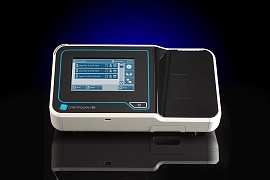
Sulfur Analyzer SPECTROSCAN SE
The analyzer is designed to determine the mass fraction of sulfur from 3 million-1 (ppm) in oil and petroleum products in accordance with GOST R 51947-2002, GOST 32139-2019, GOST R EN ISO 20847-2010 / GOST ISO 20847-2014, ASTM D4294, GB/T 17040-2019.
Implements an arbitration method for measuring the mass fraction of sulfur for oil, automotive fuels of class K2, K3, jet engine fuel, aviation gasoline, fuel oil and marine fuel, and is also used for operational control of sulfur content in automotive fuels of Class 4 and 5, gas oils, bitumen, lubricating oils and their components and other petroleum products.
The analyzer greatly simplifies the routine analysis procedure. Intuitive interface provides convenience and ease of use.
The analyzer is a proprietary development of NPO "SPEKTRON". The device is manufactured in St. Petersburg mainly from domestic components.
Minimum operator actions:
- calibration is selected and the name of the sample is entered;
- two cuvettes are filled with a sample;
- the obtained samples are placed in the analyzer and measurements are started;
- all subsequent actions are performed automatically:
- the average value of the mass fraction of sulfur is calculated and displayed;
- repeatability is calculated;
- the results are checked for compliance with the selected standard;
- measurement results are printed on the built-in printer and saved.
NPO Spektron
Saint Petersburg
Produced in: Saint Petersburg
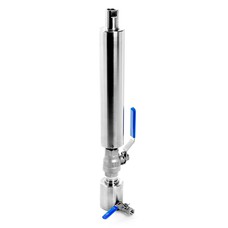
Raid bomb BR-02T
It is designed to determine the absolute vapor pressure of crude oil and petroleum products with a saturated vapor pressure over 180 kPa (except for liquefied petroleum gases) in accordance with the State Standard 1756 and the State Standard 31874 (except for method B).
The ratio of volumes of air and liquid chambers within 3.95 4.05.
Termeks
Tomsk
Produced in: Tomsk
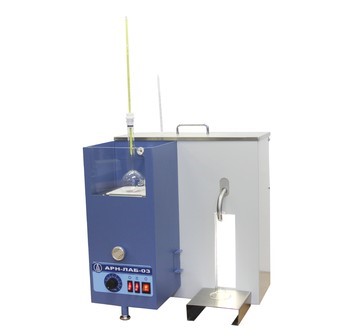
Apparatus for dispersing petroleum products
Technical specifications:
Acceleration temperature up to 400°C
Supply voltage 220 V
Power consumption, no more than 750 watts
Overall dimensions 450x450x535 mm
Weight 20 kg
LOIP
Saint Petersburg
Produced in: Saint Petersburg
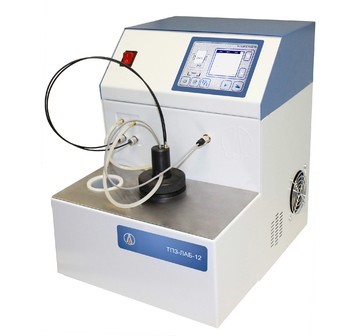
Automatic Rapid Analysis device for turbidity/solidification temperature of petroleum products TPZ-LAB-12
TPZ-LAB-12 belongs to the latest generation of equipment of JSC "LOIP". The device is designed taking into account all the requirements of the standards for testing. A unique feature of TPZ-LAB-12 is a built–in cooling unit capable of cooling the test cell to -85 °C without the use of external cooling systems. The device automatically sets and maintains the temperature of the cooling bath, conducts tests to determine the temperature of turbidity and solidification, creates and stores test reports in memory.
Technical specifications:
The volume of the analyzed sample is 4.5 ml
Temperature range of the test cell
-85...+51°C
Accuracy of temperature maintenance ± 0.5 °C
Maintaining the temperature of the cooling bath Integrated cooling system
Built-in memory of at least 1000 protocols
Color LCD display with touch screen
Supply voltage 220 V
Power consumption 250 W
Overall dimensions 315x470x405 mm
Weight 15 kg
LOIP
Saint Petersburg
Produced in: Saint Petersburg
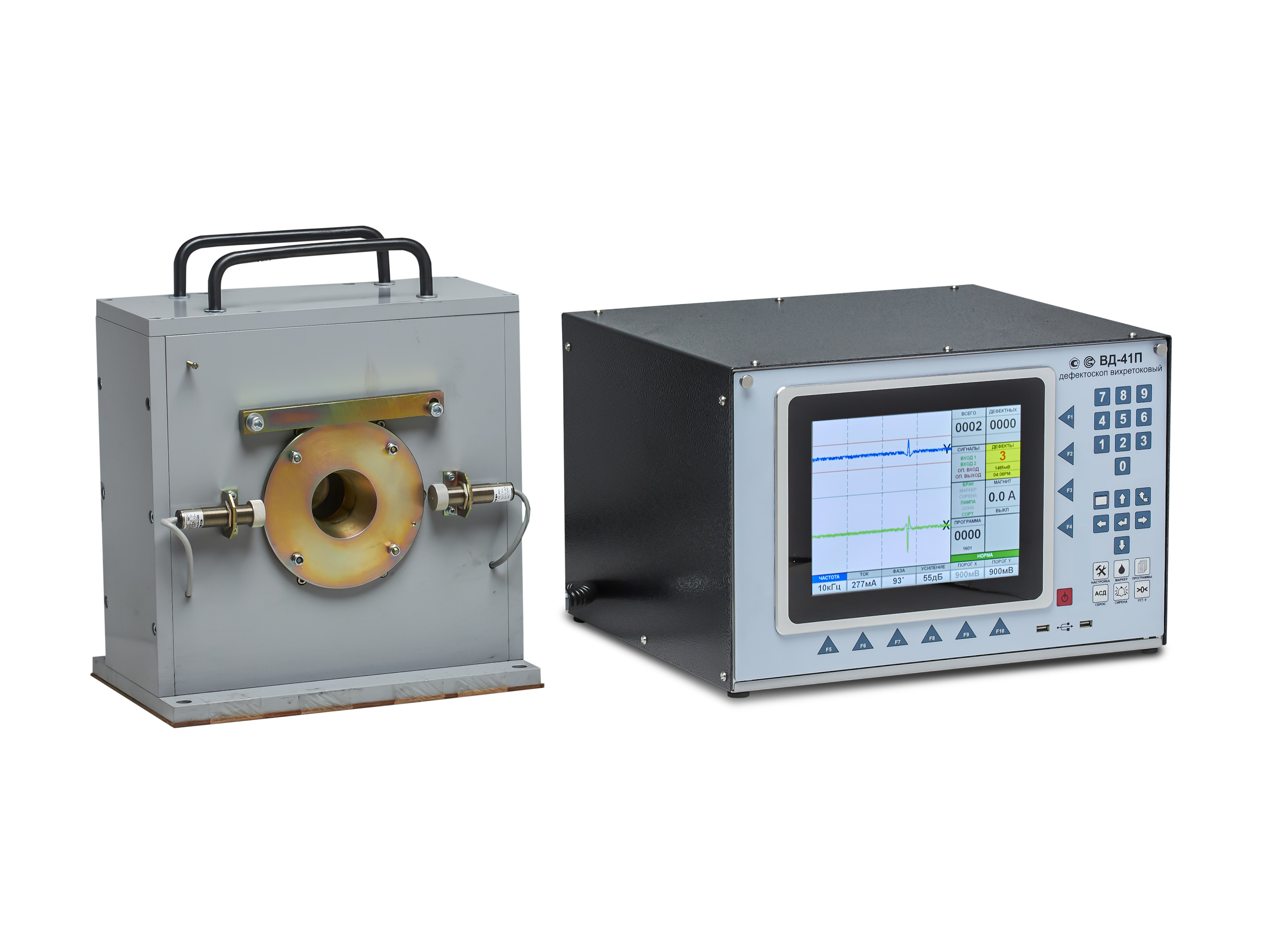
VD-41P Eddy Current Flaw Detector
Scope of application
The VD-41P eddy current flaw detector is designed to work as part of automated quality control lines at pipe-rolling and metal-rolling enterprises with continuous output control of products together with other auxiliary devices: a paint meter, a path sensor, an object presence sensor, an automatic sorter, a demagnetizer.
The device can also be used for input control at machine-building enterprises of the automotive, aviation, oil and gas, and agricultural industries.
Technical specifications:
Control frequencies: 1.0 – 100 kHz.
Control speed (line speed): 0.5 - 5 m/s.
The high-frequency filter is automatically adjustable depending on the speed.
Signal phase adjustment: 0 - 359° .
Converter current adjustment: 50 – 500mA.
Automatic monitoring of the operability of the measuring converter.
Data processing:
- Software adjustable filter.
- Signal evaluation using signal masks:
- circular mask,
- sector masks.
- Sorting by control results.
Display: 10.2” (26 cm) touch LCD (800x600).
Operating system used: WINDOWS® 7.
Dialog language: Russian, other languages (optional).
Applicable eddy current converters: overhead type, through type, sector type.
Interfaces:
- Connector for the converter unit.
- External automation control connector.
- 4 outputs with delay adjustment - "dry contact".
- 2 external information inputs.
- VGA interface for connecting an external monitor.
- USB 2.0.
- Network: Ethernet (TCP/IP).
- Other interfaces on special order.
Power supply: 220 V, 50 Hz.
Operating temperature range: 0 to +40°C.
Type of climatic performance - UHL 4 (i.e. for moderate and cold climate).
Enclosure protection degree: IP 53.
Dimensions, w/h/d: 471 x 285 x 460 mm / can be built in a 19” rack/cabinet.
Weight: approx. 20 kg.
RII MNPO SPEKTR
Moscow
Produced in: Moscow
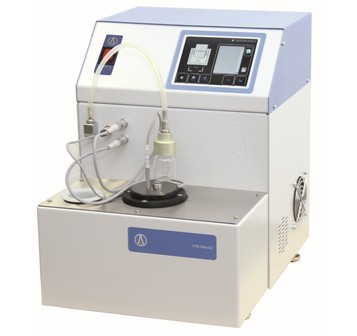
Apparatus for dispersing petroleum products ARN-LAB-03
A device for quality control of petroleum products
Automatic apparatus for determining the maximum temperature of filterability on a cold filter with an integrated cooling system PTF-LAB-12
The automatic apparatus PTF-LAB-12 is designed to determine the maximum temperature of filterability on a cold filter in accordance with GOST 22254-92, GOST R 54269-2010, GOST EN 116-2013, ASTM D6371, IP309 and other similar standards in the temperature range from -67 ° C to room temperature.
Developed taking into account all the requirements of state standards for testing.
PTF-LAB-12 is equipped with an integrated cooling system of the bath, which allows you to reach the lower temperature limit of -67 ° C without using external cooling systems.
Technical specifications:
The volume of the analyzed sample is 45 ml
Measurement range of filterability temperature from -67 °C to room temperature
Accuracy of maintaining sample temperature ± 0.5 °C (at bath temperature -34 °C)
± 1.0 ° C (at bath temperature -51 °C)
± 2.0 °C (at bath temperature -67 °C)
Creating a vacuum built-in diaphragm pump
Maintaining the temperature of the cooling bath Integrated cooling system
Step-by-step temperature control (-34 °C, -51 °C and -67 °C)
Built-in memory of at least 1000 protocols
Color LCD display with touch screen
The device is controlled by touch
Supply voltage 220 V
Power consumption 300 W
Overall dimensions, WxDxH 315x470x405 mm
Weight 15 kg
LOIP
Saint Petersburg
Produced in: Saint Petersburg
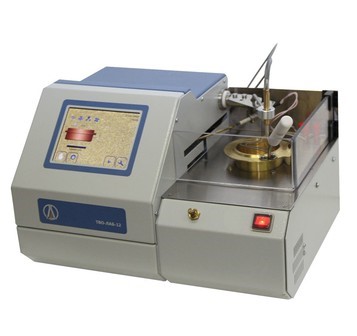
Automatic apparatus for determining the flash point in an open crucible TVO-LAB-12
Technical specifications:
Flash temperature measurement range 0...400°C
Heating speed 0.5...20°C/min
The ignition period is 0.5...10°C
Igniting a gas flame
Flash/ignition ionization sensor
Power consumption from AC 220V, no more than 700 watts
Overall dimensions 405x340x265 mm
The weight of the device is 12 kg
LOIP
Saint Petersburg
Produced in: Saint Petersburg
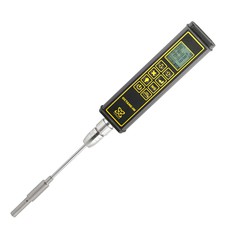
Octanometer OCTANE-IM
Digital indication of measured values
• Fuel volume for measuring 50 cm3
The minimum immersion depth of the sensor is 90 mm
The time of setting the operating mode is 3 seconds
Overall dimensions 470x60x35 mm
Weight 0.7 kg
Termeks
Tomsk
Produced in: Tomsk

Tripod for determining the density of petroleum products LA-901
The use of this tripod extends the functionality of thermostats for determining the viscosity of LOIP LT-910, LOIP LT-912 and allows for density determination tests in accordance with GOST 3900-85 and GOST R 51069-97, in the temperature range -42 ...150 ° C, with an accuracy of up to ± 0.01 ° C.
The tripod works with instruments:
LOIP LT-380
LOIP LT-910
LOIP LT-912
LOIP LT-810
LOIP
Saint Petersburg
Produced in: Saint Petersburg
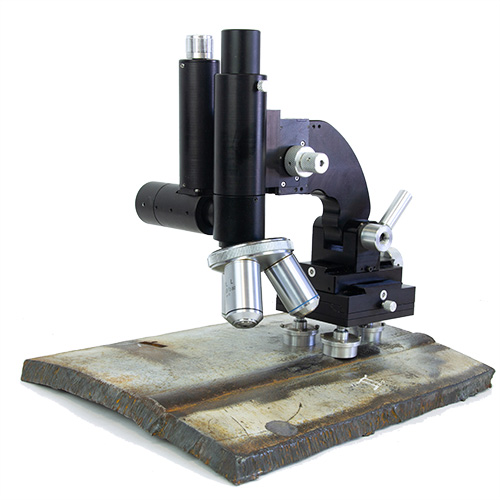
Portable microscope SIAMS MAP-5
● Magnification range: 50 - 800x
● Interchangeable lenses planachromat 5x/0.12, 10x/0.25, 20x/0.40, 40x/0.60 (on request), 50x/0.70, 80x/0.80 with extended working range
● Eyepiece 10x/18mm
● Illuminator: LED illuminator with stabilized source and built-in battery. Lighting adjustment with linear intensity change. The charger is included.
● Microscope tripod with height adjustment with a stroke of 35 mm. The ability to tilt the tripod at an angle of ± 20 degrees forward and backward to take pictures of a curved surface without moving the microscope from the mounting point
● Moving the lens 30x30 mm along the X-Y axes
● Coarse and fine focusing handles
● Strong magnetic fastening on 3 points using hinged supports for mounting on curved convex and concave steel surfaces, including pipe bends with a diameter of 60 mm
● Anti-slip nozzles
● Metal mounting for non-magnetic surfaces with ratchet mechanism
● The base for fixing the microscope in stationary operation
● Bayonet mount for camera
● C-mount mount for video camera
● Transport plug for video output
● A case for carrying a microscope with a camera.
SIAMS
Екатеринбург
Produced in: Ekaterinburg
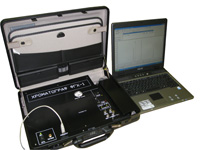
Portable Gas chromatograph FGH-1
from
573 000 ₽
The compounds to be determined are marginal and unsaturated hydrocarbons, alcohols, esters and esters, aromatic hydrocarbons, ketones, petroleum products, solvents, chlorine derivatives of hydrocarbons, etc. The list of substances is constantly updated, currently includes more than 100 ingredients.
Detector one photoionization detector (PID) with Krypton vacuum ultraviolet lamp (VUV)
One capillary column 25 m, phase SE, OB-61, FFAP, 624, etc.
The threshold for determining benzene in air is 0.01 mg/m3
Average analysis time 15 min
Powered by built-in batteries,
220 V mains
Dimensions 460×350×120 mm (standard case),
487×370×180 (shockproof case)
Autonomy of up to 300 analyses without replacement of carrier gas,
up to 5 hours without charging batteries (for chromatograph without heated dispenser tap)
Metrology
Portable gas chromatographs of the FGH series, in particular the FGH-1 model, are registered in the State Register of Measuring Instruments under No. 16615-07 (certificate RU.C.31.004.A No.30175/1 dated 12/26/2012). All methods of analysis are certified in accordance with GOST R ISO 5725-6 and entered into the Federal Register.
EKAN
Moscow
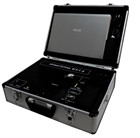
Two-channel portable gas chromatograph FGH-1-2
from
1 030 000 ₽
The FGH-1-2 chromatographs have retained the main advantages of the FGH-1 model – mobility and ease of operation and maintenance. At the same time, FGH-1-2 has all the advantages of a modern multichannel chromatograph – the ability to reliably identify and accurately determine the concentrations of various pollutants of environmental objects. The additional use of automatic identification in the processing of chromatograms simultaneously through both channels makes FGH-1-2, in fact, a universal selective gas analyzer of organic substances using the chromatographic separation method.
In FGH-1-2, as well as in FGH-1, all methodological problems have been solved:
all measurement methods (MI) used are certified,
the devices are equipped with sampling devices prescribed in MI,
the devices are graded according to the required substances,
independent control of the stability of calibration characteristics and measurement errors is provided.
EKAN
Moscow
Produced in: Moscow
